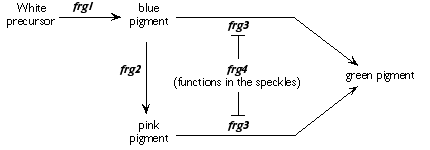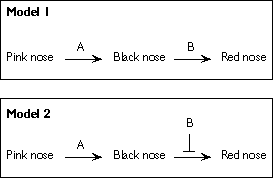|
FOR THIS QUESTION, ASSUME THAT DAX-1 MUTATIONS CAN BE EITHER DOMINANT
OR RECESSIVE. The situations below show possible functions for
wild type DAX-1. For each function, two possible effects of mutation
are given. Next to each mechanism, indicate whether, for that
case, the adrenal hypoplasia mutation would be dominant or recessive.
(12 pts)
WILD TYPE DAX-1 FUNCTION: transcriptional repressor
MUTATION EFFECT: always active repressor, or "super repressor"
DOMINANT or RECESSIVE? _____________________________
MUTATION EFFECT: inactive repressor
DOMINANT OR RECESSIVE? _____________________________
WILD TYPE DAX-1 FUNCTION: transcriptional activator
MUTATION EFFECT: always active activator
DOMINANT OR RECESSIVE? _____________________________
MUTATION EFFECT: inactive activator
DOMINANT OR RECESSIVE? _____________________________
|

